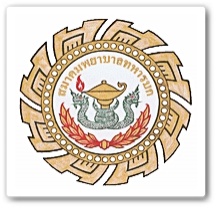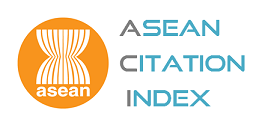การใช้ที่นอนลมสำหรับการจัดท่านอนคว่ำในผู้ป่วยภาวะทางเดินหายใจล้มเหลวเฉียบพลันกับการลดภาวะแทรกซ้อนในการเกิดแผลกดทับ
คำสำคัญ:
ท่านอนคว่ำ, แผลกดทับ, ที่นอนลมบทคัดย่อ
ภาวะทางเดินหายใจล้มเหลวเฉียบพลัน (acute respiratory distress syndrome : ARDS) เป็นภาวะวิกฤติของระบบทางเดินหายใจที่สามารถเกิดขึ้นจากหลายสาเหตุ ซึ่งสาเหตุหลักคือภาวะติดเชื้อ เมื่อผู้ป่วยมีภาวะ ARDS ร่วมด้วยจะส่งผลให้มีอัตราการเสียชีวิตสูงขึ้น ถึงแม้ปัจจุบันการรักษามีการนำอุปกรณ์ที่ซับซ้อนมาใช้ เช่น การรักษาด้วย Extracorporeal membrane oxygenation (ECMO) แต่การทำ ECMO ยังเป็นที่จำกัดสำหรับผู้ป่วยที่เข้าได้ตามเกณฑ์ในโรงพยาบาลเท่านั้น การจัดท่านอนคว่ำ (prone position) จึงเป็นหนึ่งในมาตรฐานการรักษาที่สำคัญ และอาจลดอัตราการเสียชีวิตของผู้ป่วย ARDS ซึ่งสามารถทำได้ทุกโรงพยาบาล ถึงแม้ว่าการจัดท่านอนคว่ำจะเป็นประโยชน์ต่อการรักษาผู้ป่วย ARDS แต่ก็มีภาวะแทรกซ้อนที่อาจเกิดขึ้นได้ เช่น ภาวะแทรกซ้อนต่อระบบทางเดินหายใจ เช่น การอุดตันของท่อทางเดินหายใจ การเลื่อนหลุดของสายระบาย และระบบไหลเวียนเลือด เช่น ภาวะความดันโลหิตต่ำ รวมถึงอันตรายต่อผิวหนัง เช่น การเกิดแผลกดทับ ดังนั้น การจัดท่านอนคว่ำจึงมีข้อดี หรือผลเสียที่อาจเกิดขึ้นจากเทคนิคหรือเทคโนโลยีที่ไม่ถูกต้อง เช่น การเคลื่อนย้ายผู้ป่วยหรือการลดการเกิดแผลกดทับด้วยที่นอนลม เพื่อลดภาวะแทรกซ้อนดังกล่าว โดยการนำเอานวัตกรรมและเทคโนโลยีช่วยลดแรงกดด้วยระบบเซนเซอร์ คือ ที่นอนลมสำหรับการจัดท่านอนคว่ำช่วยลดความเสี่ยงที่จะเกิดแผลกดทับ
Downloads
References
Arabi Y, Arroliga A, Bernard G, Bersten A, Brochard L, Calfee C, et al. A New Global Definition of Acute Respiratory Distress Syndrome. American Journal of Respiratory and Critical Care Medicine, 2024.
Diamond M, Peniston HL, Sanghavi DK, Mahapatra S, Doerr C. Acute Respiratory Distress Syndrome (Nursing). Island: StatPearls Publishing; 2023.
Parcha V, Kalra R, Bhatt SP, Berra L, Arora G, Arora P. Trends and geographic variation in acute respiratory failure and ARDS mortality in the United States. Chest journal. 2021;159(4): 1460-72.
Huang X, Zhang R, Fan G, Wu D, Lu H, Wang D, et al. Incidence and outcomes of acute respiratory distress syndrome in intensive care units of mainland China: a multicenter prospective longitudinal study. critical care journal. 2020;24(1):515. doi: 10.1186/s13054- 020-03112-0. PMID: 32819400; PMCID: PMC7439799.
Qadir N, Sahetya S, Munshi L, Summers C, Abrams D, Beitler J, et al. An update on management of adult patients with acute respiratory distress syndrome: an official American Thoracic Society clinical practice guideline. American journal of respiratory and critical care medicine 2024;209(1):24-36.
Gattinoni L, Brusatori S, D’Albo R, Maj R, Velati M, Zinnato C, et al. Prone position: how understanding and clinical application of a technique progress with time. Anesthesiology and Perioperative Science Journal. 2023;1(1): 1-17.
Pérez-Juan E, Maqueda-Palau M, Feliu-Roig C, Gómez-Arroyo JM, Sáez-Romero D, Ortiz-Monjo A. Incidence of pressure ulcers due to prone position in patients admitted to the ICU for Covid-19. Enfermería Intensiva (English edition) Journal. 2023;34(4):176-85.
McEvoy NL, Friel O, Clarke J, Browne E, Geoghegan P, Budri A, et al. Pressure ulcers in patients with COVID-19 acute respiratory distress syndrome undergoing prone positioning in the intensive care unit: a pre-and post-intervention study. Nursing in Critical Care Journal. 2023;28(6):1115-23.
Binda F, Galazzi A, Marelli F, Gambazza S, Villa L, Vinci E, et al. Complications of prone positioning in patients with COVID-19: a cross-sectional study. Intensive and Critical Care Nursing Journal. 2021;67(1):1030-88.
Aimmak B, Nuekwen P, Khanacharoen S, Homjeen T. The Development of Clinical Nursing Practice Guidelines for the Prevention of Complications from Prone Position in Patientswith Acute Respiratory Distress Syndrome. Rajavithi Hospital. Vajira Nursing Journal. 2022;24(1):51-66. (in Thai)
European Pressure Ulcer Advisory Panel (EPUAP), National Pressure Injury Advisory Panel (NPIAP), Pan Pacific Pressure Injury Alliance (PPPIA). Prevention and treatment of pressure ulcers/injuries: clinical practice guide lines. The international guideline. 3rd ed. Emily Haesler. editor. EPUAP, NPIAP, PPPIA; 2019.
Chaiyara S, Nadsantia P, Srithong I, Sirimontri J. The Development of Nursing System for Critical ill patients with covid-19 at Sakon Nakhon Hospital. Journal of The Royal Thai Army Nurses. 2023;24(2):435-45. (in Thai)
Prapainop K, Artsanthia J. Wound Care for Patients in Thailand 4.0 with Nanotechnology. Journal of The Royal Thai Army Nurses. 2017;18(3): 9-15. (in Thai)
Ketsamphan Y. From pressure ulcer to pressure injury: Etiology, definition and staging. In: Wongwisetkan J, Sinmaneerat C, Phumraya P, Chuangsawatsak S, editors. Pressure ulcer skin injury and chronic wound: nursing professional issues and opportunity in new ages: Ebook ; 2018. (in Thai)
Katz T, Gefen A. The biomechanical efficacy of a hybrid support surface in protecting supine patients from sacral pressure ulcers. International Wound Journal. 2023;20(8): 3148-56.
Misaki A, Imanishi K, Takasugi SI, Wada M, Fukagawa S, Furue M. Body pressure sensing mattress for bedsore prevention. SEI technical review Journal. 2014;78(1):95-9.
Kawabata T, Sugama J. Relationship between mattress internal air pressure and interface pressure distribution in the lateral position. International Wound Journal. 2022;19(8): 2115-23.
Downloads
เผยแพร่แล้ว
How to Cite
ฉบับ
บท
License
Copyright (c) 2024 วารสารพยาบาลทหารบก

This work is licensed under a Creative Commons Attribution-NonCommercial-NoDerivatives 4.0 International License.
บทความหรือข้อคิดเห็นใดใดที่ปรากฏในวารสารพยาบาลทหารบกเป็นวรรณกรรมของผู้เขียน ซึ่งบรรณาธิการหรือสมาคมพยาบาลทหารบก ไม่จำเป็นต้องเห็นด้วย
บทความที่ได้รับการตีพิมพ์เป็นลิขสิทธิ์ของวารสารพยาบาลทหารบก
The ideas and opinions expressed in the Journal of The Royal Thai Army Nurses are those of the authors and not necessarily those
of the editor or Royal Thai Army Nurses Association.






